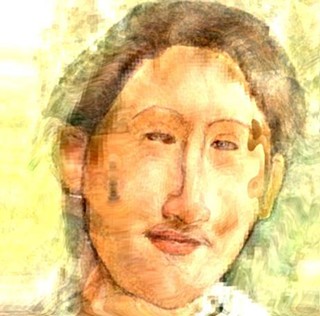A weir, director Brian Kearney explains in his program note, is a dam, the word derived from a term meaning to protect or defend. "On one side of the dam all is still, quiet and deep," Kearney writes. "On the other side, enormous energy pours forth in the released waters. The dam is an intrusion upon natural forces, penning up the primal power of life. The characters in The Weir are similarly penned up, self-protected, still, and in need of release. They achieve this through drink, humor, and storytelling."
Four men and one woman have gathered in a pub on a windy night in a remote corner of Ireland. For some of the characters, these pub nights are the only break in their daily isolation. A couple of these people harbor small, old resentments against some of the others, and there's an undercurrent of hostility to many of their jokes. Still, it all has to be delivered with a smile and a readiness to make amends if offense be taken; companionship does not come easily here for these people, and they can't afford to alienate each other. Every potentially cutting remark is smoothed over with a chuckle. It's a perfect illustration of neuroscientist V.S. Ramachandran's theory of the evolution of laughter: "The main purpose of laughter might be to allow the individual to alert others in the social group ... that the detected anomaly is trivial, nothing to worry about."
Jack and Jim, middle-aged bachelors, are regulars at a pub overseen by Brendan, a younger, unmarried man. Tonight, a novelty: the arrival of Finbar, a married man who owns half the town, who is introducing a newcomer, Valerie, to the locals. Finbar has just sold Valerie a house, and the banter turns to an old story of how the house had been built on a "fairy road," to the distress of one of its former occupants.
This launches a series of personal ghost stories told by each character in turn, except for the underused Brendan. It gradually becomes apparent that spooks and sprites aren't the true subjects of these tales; the stories really revolve around loss and devastating loneliness. By the time Jack tells his own story, there's nothing at all supernatural to it, but he is clearly haunted none the less.
In an age when playwrights structure and pace their works like films, with short, crisp scenes and frequent changes of locale, author McPherson and director Kearney have jettisoned most of the conceits of both cinema and stage. The Weir unfolds in real time, an unbroken two hours, reproducing the repetitive, sometimes stumbling rhythms of pub conversation and then easing off to let each character tell a tale unencumbered by fancy stage business or intrusive sound or lighting effects.
The play's opening beat is fairly unimportant small talk, giving the audience a chance to acclimate to the Irish vocabulary and accents. (To their credit, actors Tim Janes and Brian Wees are so adept at the dialect that a few early lines are nearly unintelligible to American ears.) By the time all the characters have assembled, though, nearly every word counts, and there's no difficulty figuring out that these people are revealing more about themselves than they realize.
Jack is really the play's central character, and Janes, ever wry and world-weary, is a natural for the role. He's a bundle of bluster, anger and regret, doing his best to laugh it all off. Ted Parks deftly plays Jim as not the fastest horse on the track, but doesn't turn him into the village idiot, either. Brian Wees has a natural feel for Brendan, the pub proprietor, and director Kearney, doubling as Finbar, and Laura Ann Herman as Valerie make touching impressions in roles that could easily veer into melodrama. At times last Saturday, Kearney's accent nearly evaporated, but that's the only complaint one could make about the acting.
As director, Kearney missed most of his opportunities to convey the men's sexual jockeying around Valerie; that aspect of the play was suggested verbally, but not so much physically. Otherwise, he nobly resisted the American tendency to turn Irish characters into oversized leprechauns; he and the actors have made these people seem real and untidy in their complexities, which more often than not are expressed through silence rather than through words.
Quintessential Productions has been largely on hiatus for the past year and a half or so, as the company develops its own home in an old warehouse on the eastern edge of downtown. The Weir is being presented at multipurpose Muse, and it's a production of such sense and sensitivity that one hopes Quintessential will return to a full schedule as soon as possible.








